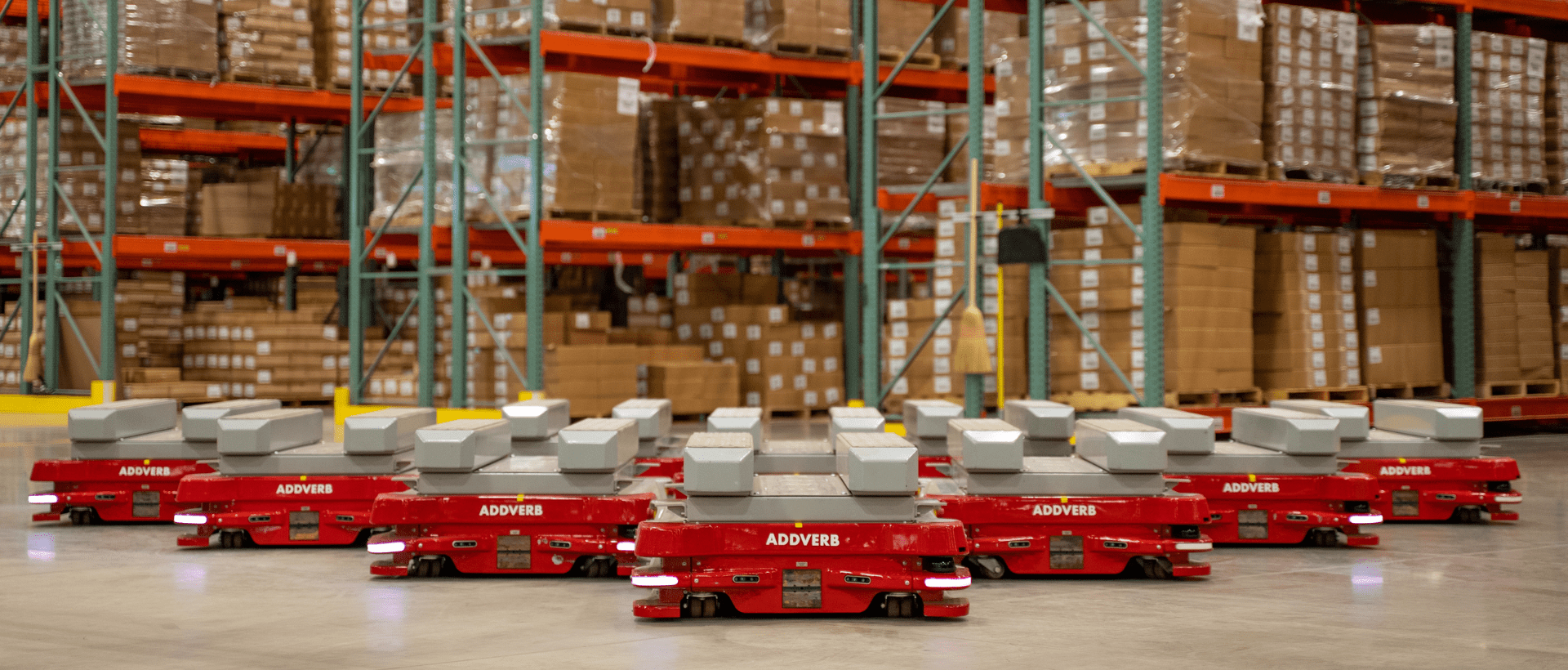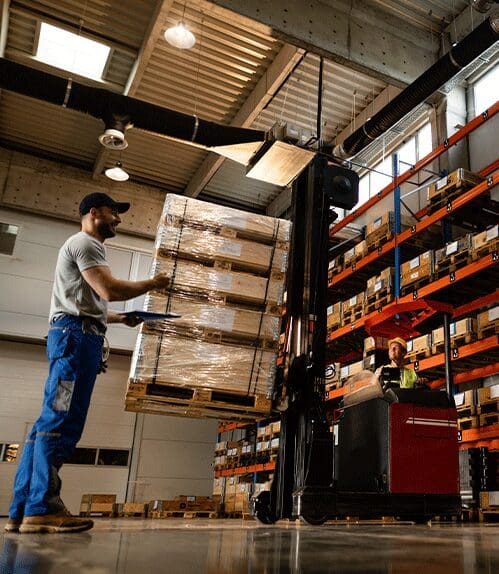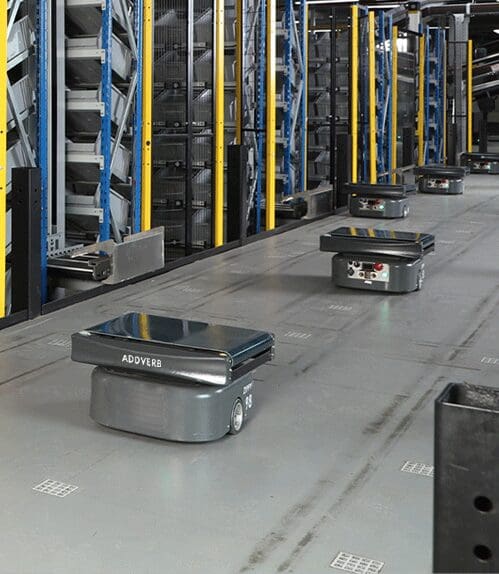Índice
Los sectores del comercio electrónico, la fabricación, la logística y la venta al por menor han sido algunos de los primeros en adoptar los robots móviles a través de Robots como servicio. A medida que estos sectores crecen, aumenta la demanda de soluciones de automatización para gestionar operaciones de almacén complejas. La capacidad de ampliar los sistemas robóticos en respuesta a las necesidades del mercado es un factor clave que impulsa su adopción generalizada.
ABI Research prevé que en 2026 se habrán implantado más de 1,3 millones de RaaS en todo el mundo, lo que pone de manifiesto el importante potencial de crecimiento de este modelo. Los robots móviles ya desempeñan un papel crucial en la mejora de la eficiencia operativa, y su integración a través de RaaS está ayudando a empresas de todos los tamaños a mejorar la velocidad de cumplimiento, la precisión y la rentabilidad.
El concepto de robots como servicio (RaaS)
Robot como servicio es un modelo de negocio innovador en el que las empresas pueden alquilar soluciones robóticas, pagando sólo por los servicios de automatización que utilizan.
En lugar de realizar una única compra de capital, las empresas pueden integrar la robótica mediante suscripción, lo que permite una mayor flexibilidad financiera y agilidad operativa.
Este modelo reduce la barrera de entrada para las pequeñas y medianas empresas, haciendo que la automatización sea accesible para organizaciones que antes podían verse disuadidas por los altos costes. Con RaaS, las empresas pueden ajustar su flota robótica en función de la demanda, ampliándola o reduciéndola según sea necesario sin la carga de una inversión permanente.
El papel de los robots móviles en el modelo RaaS
Los robots móviles son especialmente adecuados para el modelo RaaS por su flexibilidad, adaptabilidad y rentabilidad. Estos robots pueden navegar de forma autónoma por entornos de almacén, realizar tareas como picking, clasificación y transporte de materiales, e integrarse perfectamente en los flujos de trabajo existentes. Su capacidad para funcionar 24 horas al día, 7 días a la semana mejora la productividad y garantiza unas operaciones logísticas fluidas sin necesidad de intervención humana continua.
Robots móviles, incluidos robots móviles autónomos (AMR)son especialmente útiles en sectores con demandas fluctuantes, como el comercio electrónico. Cuando los volúmenes de pedidos aumentan durante las temporadas altas, RaaS permite a las empresas ampliar temporalmente su plantilla robótica, lo que supone una solución rentable para satisfacer las crecientes necesidades operativas.
LEER MÁS: AddverbMondial Relay, el primer modelo de robot como servicio de la UE
Principales ventajas de RaaS en almacenamiento y logística
- Eficiencia de costes: Uno de los principales impulsores de la adopción de RaaS es la capacidad de reducir los gastos de capital. Al pasar de una inversión de capital a un gasto operativo, las empresas pueden asignar sus recursos de forma más eficiente, liberando fondos para otras actividades empresariales críticas.
- Escalabilidad: RaaS ofrece a las empresas la flexibilidad de ampliar sus operaciones en función de la demanda. Durante los periodos de mayor demanda, las empresas pueden aumentar fácilmente su flota robótica sin comprometerse a una propiedad a largo plazo. Esta escalabilidad es especialmente ventajosa en sectores como el minorista, donde las fluctuaciones estacionales pueden afectar a las necesidades de inventario y cumplimiento de pedidos.
- Actualizaciones tecnológicas: Como el proveedor de RaaS mantiene la propiedad de los robots, las empresas pueden beneficiarse de actualizaciones periódicas de software y hardware sin necesidad de inversiones adicionales. Esto garantiza que los robots se mantengan actualizados con los últimos avances tecnológicos, lo que permite a las empresas seguir siendo competitivas en un mercado en rápida evolución.
- Reducción del tiempo de inactividad: El proveedor de RaaS se encarga del mantenimiento y la resolución de problemas, lo que reduce el tiempo de inactividad operativa. En lugar de hacer frente a costosas reparaciones o interrupciones, las empresas pueden confiar en su proveedor para gestionar los problemas técnicos con rapidez.
Los robots móviles transforman las industrias
Un ejemplo destacado de empresa que ha adoptado el modelo RaaS para robots móviles es Mondial Relay, proveedor líder de paquetería. Implementaron una solución de clasificación robótica de vanguardia para mejorar sus operaciones logísticas. Gracias a los robots de Addverb, Mondial Relay pudo aumentar la velocidad, la precisión y la escalabilidad de sus procesos de clasificación, garantizando unas operaciones de entrega fluidas en un entorno de ritmo rápido y gran demanda. Esta adopción les permitió ampliar sus capacidades sin la carga de grandes inversiones de capital, lo que les posicionó para el crecimiento y la flexibilidad a largo plazo.
El futuro de RaaS y los robots móviles
En Industria 4.0 sigue evolucionando, la adopción de este modelo no hará sino crecer. La demanda de mayor productividad, precisión y eficiencia operativa está empujando a las empresas hacia soluciones de automatización que puedan ofrecer resultados sin una inversión excesiva. RaaS permite a las empresas mantenerse a la vanguardia al ofrecer acceso a la robótica más avanzada, manteniendo al mismo tiempo la flexibilidad en la ampliación de las operaciones.
Para las empresas que no están preparadas para la automatización a gran escala pero quieren explorar las ventajas de los robots móviles, ofrece la solución perfecta. A medida que más empresas reconozcan el valor de las soluciones robóticas basadas en suscripciones, es probable que el futuro del almacenamiento, la fabricación y la logística dependa cada vez más de este modelo innovador.
Conclusión
La convergencia de los robots móviles y el modelo Robots-as-a-Service está transformando las industrias al ofrecer soluciones de automatización flexibles, escalables y rentables. Desde gigantes del comercio electrónico hasta pequeñas empresas, este modelo está poniendo la robótica avanzada al alcance de un mayor número de empresas, revolucionando las operaciones de manipulación de materiales y logística. A medida que esta tendencia continúe, las empresas que aprovechen RaaS para implantar robots móviles estarán mejor posicionadas para adaptarse a las dinámicas demandas de la vertiginosa economía actual.
PREGUNTAS FRECUENTES
¿Qué es el modelo de robots como servicio?
Es un modelo basado en suscripciones que permite a las empresas acceder a robots móviles y utilizarlos sin necesidad de una inversión de capital inicial significativa. Las empresas pagan una cuota periódica para desplegar soluciones robóticas adaptadas a sus necesidades operativas.
¿Qué sectores pueden beneficiarse de este modelo de robots móviles?
Es beneficioso para varios sectores, como la logística, la fabricación, la sanidad, el comercio minorista y la hostelería, donde la eficiencia y la automatización pueden mejorar significativamente las operaciones.
¿Cómo implantan las empresas este modelo?
Las empresas suelen ponerse en contacto con un proveedor de RaaS para evaluar sus necesidades, seleccionar las soluciones robóticas adecuadas y establecer un plan de suscripción. A continuación, el proveedor facilita la instalación, la formación y la asistencia continua.
¿Qué tipos de robots móviles están disponibles en el modelo?
Los tipos habituales de robots móviles que se ofrecen en el modelo RaaS incluyen robots móviles autónomos (AMR) para la manipulación de materiales, sistemas de entrega robotizados y robots de limpieza automatizados.
¿Es adecuado para las pequeñas y medianas empresas (PYME)?
Sí, es especialmente atractivo para las PYME, ya que reduce la barrera de entrada para adoptar soluciones robóticas avanzadas, lo que les permite competir más eficazmente con organizaciones más grandes.
Fundada en 2016, Addverb ofrece soluciones completas de robótica para la automatización industrial y de almacenes, con una fuerte presencia global a través de sus filiales en todo el mundo. La empresa ofrece una gama de productos de automatización internos, incluidos robots móviles autónomos, ASRS y tecnologías de clasificación. Presta servicio a más de 350 clientes, entre los que se incluyen empresas de renombre como Coca-Cola, Amazon y DHL.






